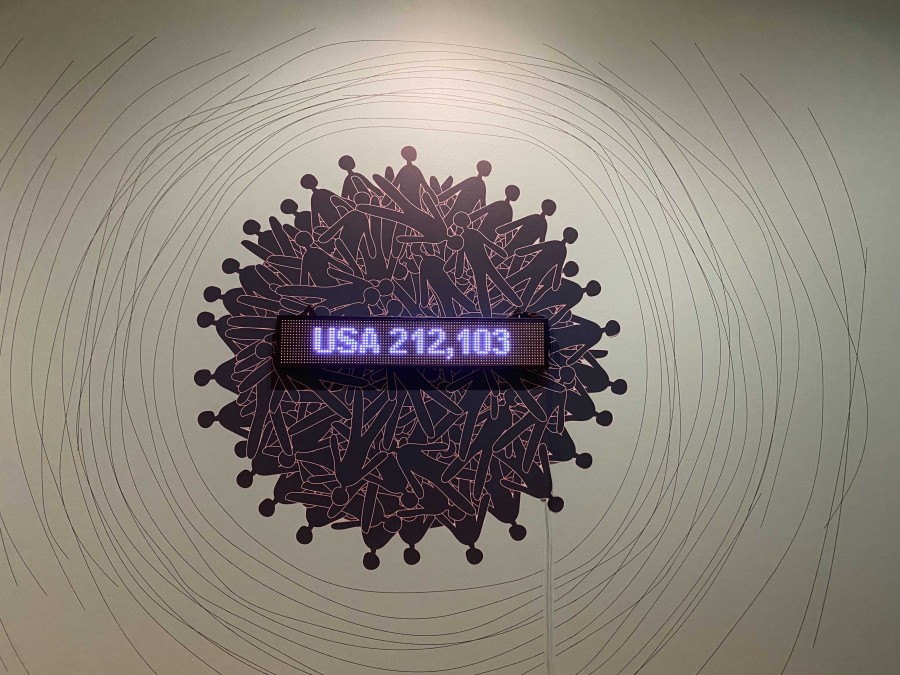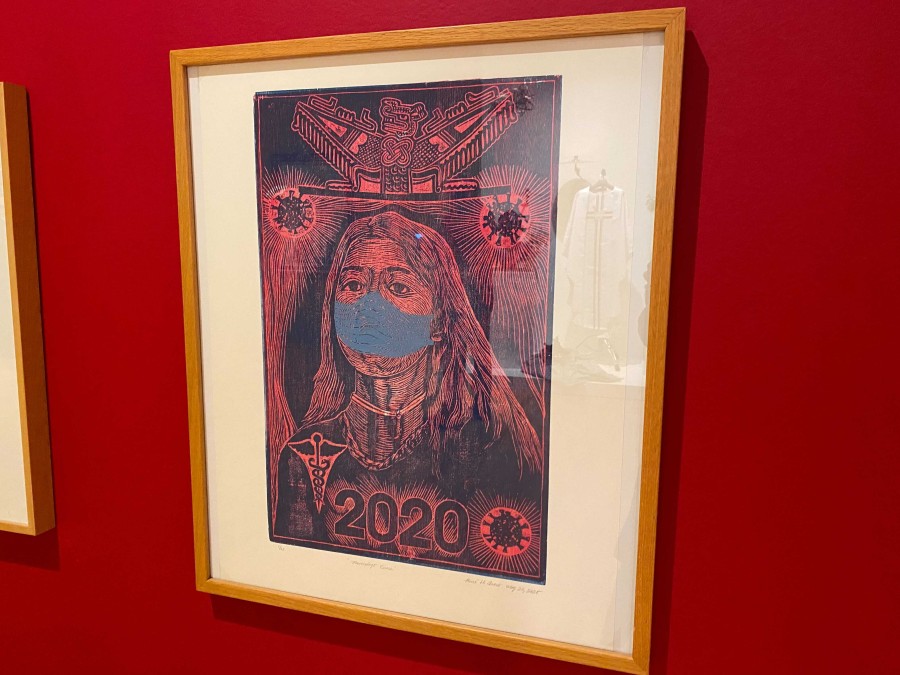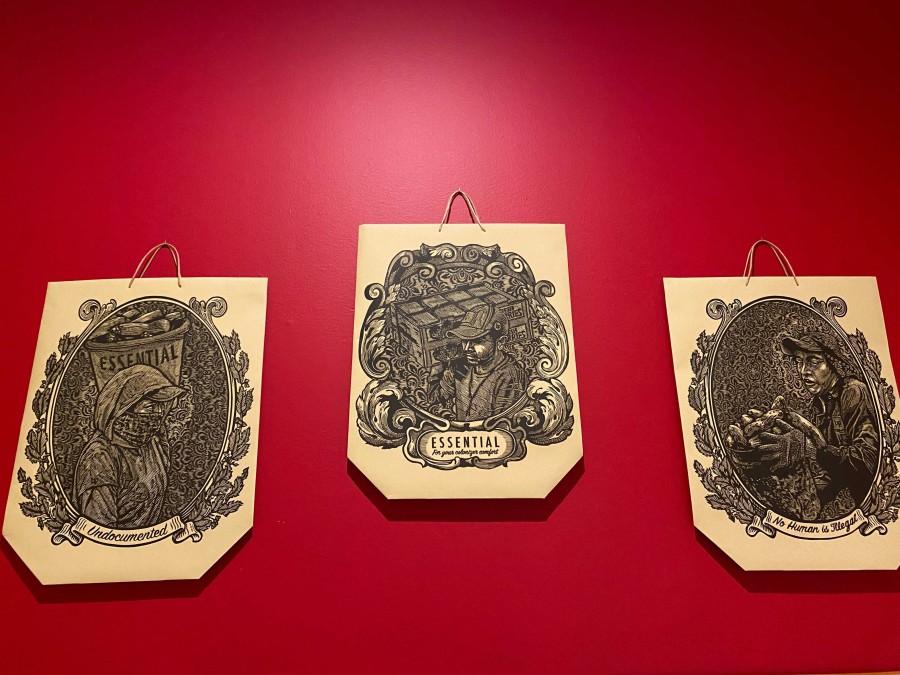COVID-19 Looms Over Day Of The Dead Exhibit At Chicago’s National Museum of Mexican Art
By Minju Park

COVID-19 Looms Over Day Of The Dead Exhibit At Chicago’s National Museum of Mexican Art
By Minju ParkMore than a million people have died during the COVID-19 pandemic, and Chicago artists are honoring the local, U.S. and worldwide victims in this year’s Day of the Dead exhibit at the National Museum of Mexican Art in the Pilsen neighborhood.
It’s the 34th year of the exhibit, and it’s different this time due to COVID-19. The museum is closed to the public, but it’s offering an online tour of works that include traditional Mexican altar centerpieces from the permanent collection, as well as contemporary prints, paintings and sculptures from Latinx, Chicago-based artists.
This year’s exhibit, titled “Sólo un poco aquí,” or “Here for a moment,” reflects on the pandemic’s death toll and connects it with the Mexican holiday that remembers those who have passed on. That connection is immediately made clear inside the gallery, where a large digital screen flickers the daily numbers of worldwide and U.S. coronavirus-related deaths.

“Day of the Dead reminds people that life and death is not abstract,” said Cesáreo Moreno, the museum’s chief curator. “Every single person will lose somebody they love, and keeping them a part of our family is something Day of the Dead does so well.”
Day of the Dead, or Día de los Muertos, is a holiday when families gather to remember the lives and deaths of ancestors. They celebrate by wearing their finest clothes, making the best traditional molé sauces and bringing out the good beer. In the U.S. this year, the event runs Saturday, Oct. 31 to Monday, Nov. 2.

Day of the Dead may feel more somber this year, especially for Latinx communities in Chicago that have been hit hard by the coronavirus. As of Oct. 21, Latinx people accounted for nearly 48% of the COVID-19 cases and 33% of the deaths, according to city data.
Day of the Dead traditions have a place in this year’s exhibit, but the artwork also has a current and sometimes political edge to it.
Carlos Barberena is a McKinley Park-based printmaker, whose piece, Illegal but Essential, addresses immigrant workers at the front lines during the pandemic. His three side-by-side prints show farm workers hauling a basket of produce, lifting a box on one shoulder and handling crops — all on paper grocery bags.

Barberena said he wanted to depict the devaluing of food production workers — many of them undocumented immigrants — as they have risked their lives in meatpacking plants or other workspaces while many Americans have worked from or sheltered at home.
“They have been essential before the pandemic, so why now they’re essential?” Barberena asked. “One of the prints, I put ‘essential for your colonizer comfort.’ It’s kind of like an exploitation because it doesn’t mean they’re not facing deportation.”
A screenprint and collage by Pilsen artist Ricardo Xavier Serment depicts the effects of schools switching to remote learning during the pandemic. His prints, titled The school year that was missed: The Season and The school year that was missed: The Graduation use Day of the Dead images including calaveras, or skeletons, and traditional cempasúchil flowers, or marigolds, in the background.

“The school year’s dead, and for Day of the Dead, you’re honoring the dead,” Serment said. “I was kind of thinking that COVID-19 took away the school year, and now I’m depicting images of students who are remembering their school year.”
Serment, who is also a Chicago Public Schools art teacher, said he noticed how his students were reacting to a canceled graduation or nixed sports season or other altered academic plans, and he made those themes in his works. His work portrays one student donned in honor roll regalia, crossing her arms in frustration. The other, a student athlete, dabs at his tears in front of a sign reading “we miss you” on the school’s facade.
“Students might feel like they were robbed, cheated from their celebratory ceremonies,” Serment said. “I want viewers to think of the secondary effects that this pandemic has had on us, specifically in the realm of education.”
Moreno hopes all the artwork in the online exhibit, which is open through Dec. 13, offers a way for viewers to grieve about the many ways their lives have been affected by the pandemic.
“If we can help by offering a holistic way of grieving, I think that’s super beneficial,” Moreno said. “It’s not bad to have a time every year — that is not in a funeral home — when speaking about death is OK because that will help you when the moment arises.”
Minju Park is a news intern for WBEZ. Follow her @meenjoo.